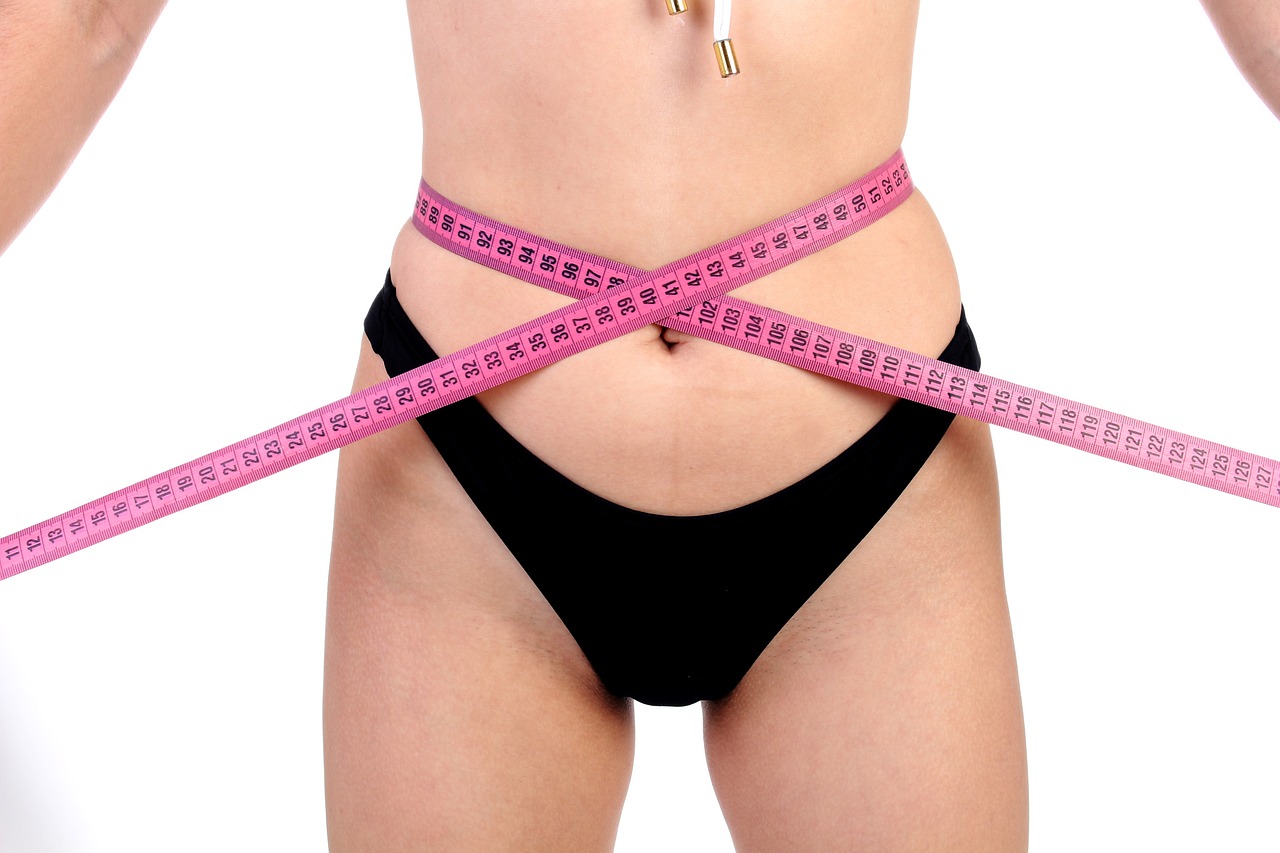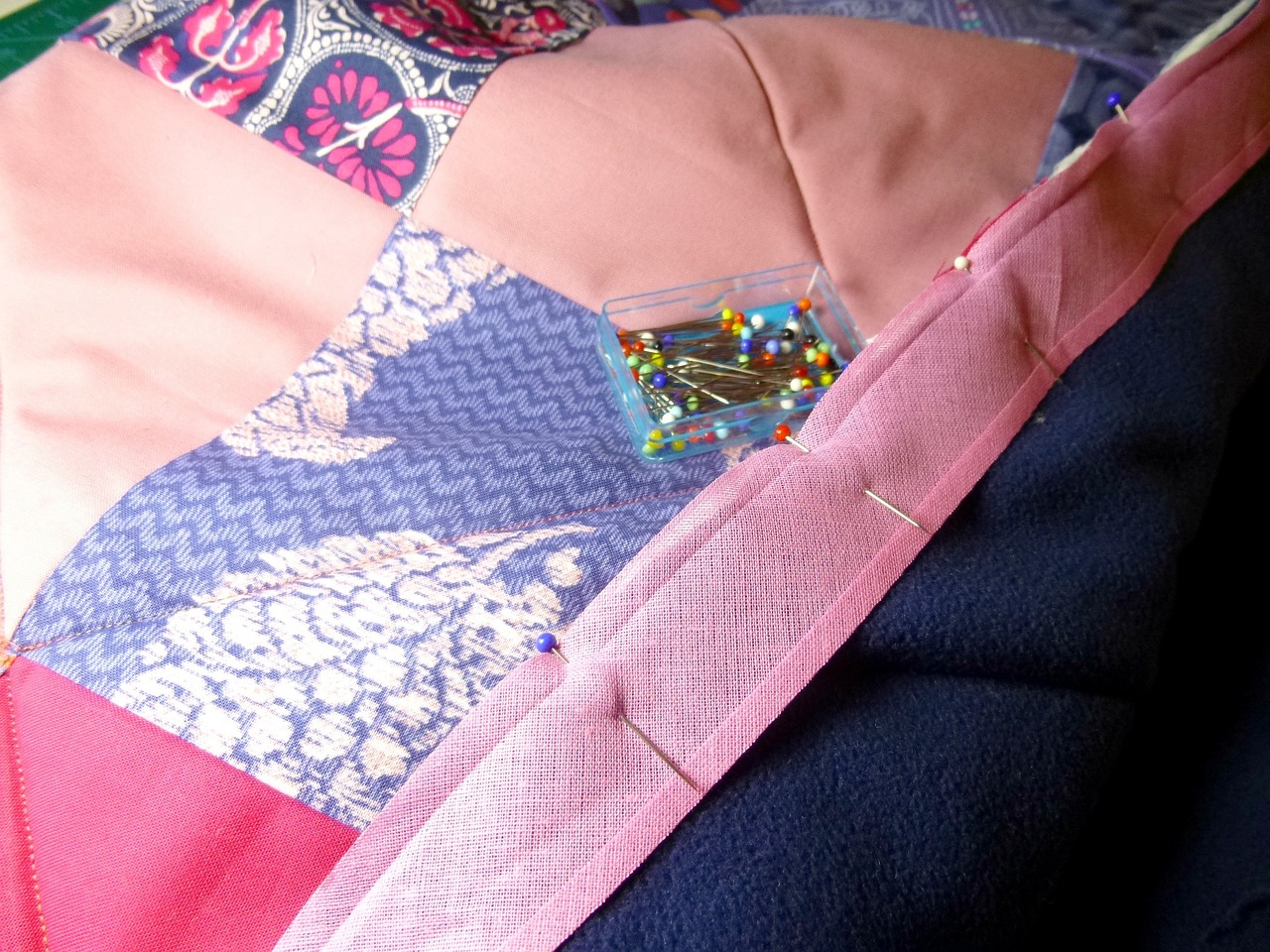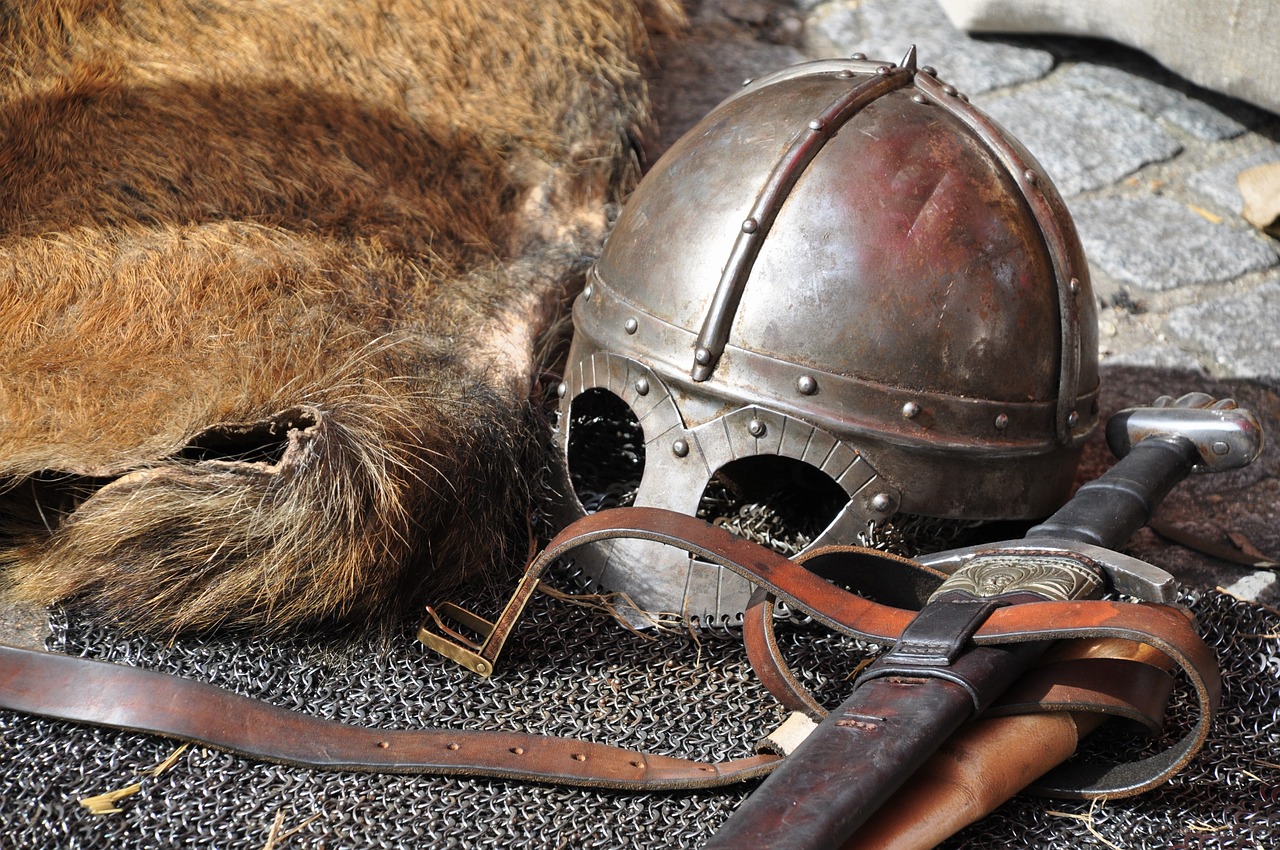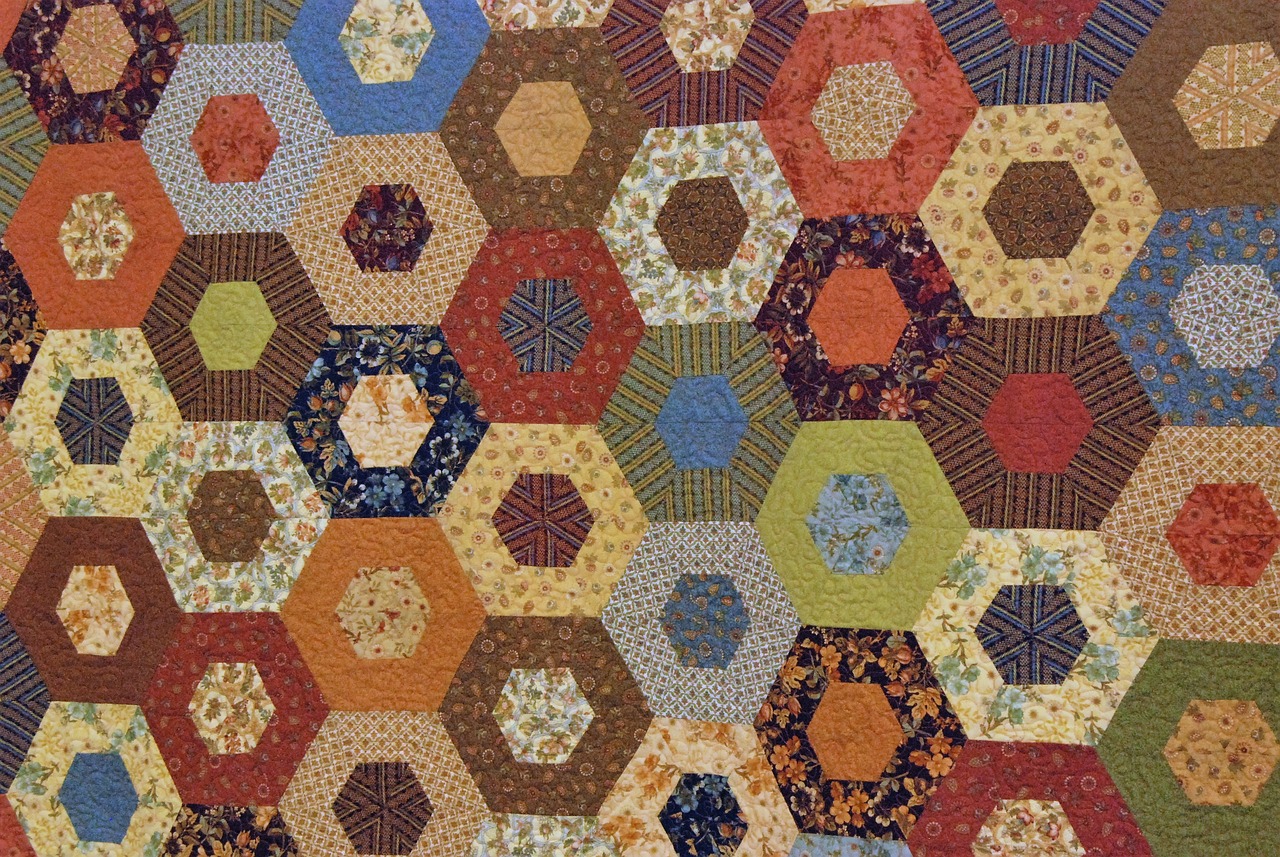Solving the Mystery of Different Quilt Sizes
Have you ever found yourself standing in front of a beautiful quilt, wondering why it looks so perfect on one bed and yet seems a bit off on another? Understanding quilt sizes can feel like cracking a secret code, but it doesn’t have to be that complicated! In this article, we’re diving deep into the world of quilt dimensions, exploring the various sizes available, their unique uses, and how to select the right size for your needs. Whether you’re a seasoned quilter or just starting out, knowing the ins and outs of quilt sizes will undoubtedly enhance your quilting experience and lead to stunning project outcomes.
Standard quilt sizes serve as the backbone for quilters, providing a solid foundation to create projects that fit common bed dimensions. Knowing these sizes helps in planning and executing quilting projects effectively. For instance, a standard twin quilt typically measures 68 inches by 86 inches, while a king quilt usually spans 120 inches by 120 inches. This knowledge is crucial because it allows you to visualize how your quilt will look on your bed, ensuring it complements your decor rather than clashes with it.
Selecting the appropriate quilt size for your bed isn’t just about aesthetics; it’s also about functionality. Imagine snuggling under a quilt that’s too small—it’s like trying to fit into shoes two sizes too small! To avoid this discomfort, it’s essential to measure your bed accurately and consider your personal preferences. Are you a fan of quilts that drape over the sides, or do you prefer a more tailored look? This section will guide you through the decision-making process, helping you choose a quilt that not only looks good but feels good too.
Several factors impact quilt size selection, including bed height, mattress thickness, and your personal style. Understanding these elements can significantly influence your choice. For example, a high-profile mattress might require a larger quilt to ensure full coverage, while a low-profile bed might allow for a smaller size. Additionally, your personal style can dictate the size and shape of your quilt. Are you drawn to oversized, cozy quilts, or do you prefer sleek, modern designs? Let’s explore these considerations further.
The height of your bed can significantly influence the quilt size you choose. To measure bed height accurately, simply grab a tape measure and measure from the floor to the top of your mattress. If you have a box spring, measure to the top of it as well. This measurement will guide you in selecting a quilt that provides optimal coverage. For instance, if your bed stands tall, you might want to consider a quilt that offers a longer drop on the sides, ensuring you stay warm and cozy throughout the night.
Your personal style plays a pivotal role in quilt size selection. Do you envision a quilt that makes a bold statement, or are you looking for something more understated? Different aesthetics can dictate the size and shape of your quilt. For example, a large, vibrant quilt can serve as a stunning focal point in a minimalist bedroom, while a smaller, intricately designed quilt might complement a more eclectic decor style. Understanding your style will not only help you choose the right size but also ensure your quilt enhances your space beautifully.
Different quilt sizes serve various purposes, from decorative throws to full-sized bed quilts. Here’s a quick look at some common sizes and their typical applications:
| Quilt Size | Dimensions (inches) | Typical Use |
|---|---|---|
| Twin | 68 x 86 | Single beds, children's rooms |
| Full | 80 x 86 | Full-sized beds, guest rooms |
| Queen | 90 x 90 | Queen-sized beds |
| King | 120 x 120 | King-sized beds |
| Throw | 50 x 60 | Decorative use, snuggling on the couch |
This table illustrates how different quilt sizes can cater to various needs, making it easier for you to select the right one for your space.
Sometimes, standard quilt sizes just don’t cut it, especially when dealing with unique bed dimensions or specific design preferences. Custom quilt sizes may be necessary to achieve the perfect fit for your bed or to match your decor style seamlessly. But when should you opt for a custom quilt? If you have a non-standard mattress size or simply want a quilt that reflects your individual taste, going custom is the way to go!
Accurate measurements are essential for creating custom quilts. To ensure you get the dimensions just right, follow these steps:
- Gather your materials: a tape measure and a notepad.
- Measure the length and width of your mattress.
- Consider the drop you want on the sides (typically 10-15 inches).
- Note down your measurements for reference.
With these steps, you’ll be well on your way to crafting a quilt that fits your bed like a glove!
Custom quilting offers numerous advantages, including personalized designs and perfect dimensions. Investing in a custom quilt means you’re not just getting a blanket; you’re getting a piece of art tailored to your style and needs. Imagine wrapping yourself in a quilt that not only fits your bed perfectly but also reflects your personality. It’s like having a custom-tailored suit, but for your bed!
Quilting different sizes can be challenging but incredibly rewarding. Here are some practical tips to help you navigate various quilt sizes with ease and confidence:
- Always measure twice before cutting your fabric.
- Consider using a quilting calculator to help with fabric requirements.
- Practice your quilting techniques on smaller projects before tackling larger quilts.
- Don’t be afraid to experiment with different patterns and styles.
By keeping these tips in mind, you’ll find that quilting various sizes becomes not just manageable but also enjoyable!
Q: What is the most common quilt size?
A: The most common quilt size is the queen size, which typically measures 90 x 90 inches, making it suitable for most standard queen beds.
Q: How do I choose a quilt size for a guest bed?
A: For a guest bed, consider using a full or queen size quilt to ensure comfort and coverage for different guests.
Q: Can I use a twin quilt on a full bed?
A: While you can use a twin quilt on a full bed, it may not provide adequate coverage. It's best to choose a quilt that fits the bed size for optimal comfort.
Q: What if I want a quilt that’s larger than standard sizes?
A: If you need a quilt larger than standard sizes, consider opting for a custom quilt to achieve the perfect fit for your space.

Understanding Standard Quilt Sizes
When it comes to quilting, understanding standard quilt sizes is essential for both novice and experienced quilters alike. These sizes serve as a guideline, providing a foundation for creating projects that fit common bed dimensions. Imagine trying to drape a beautiful quilt over your bed, only to find it doesn’t quite fit! That’s where knowing the standard sizes comes in handy. It allows you to plan and execute your quilting projects effectively, ensuring a perfect fit for your needs and aesthetic preferences.
The most common quilt sizes correspond to typical mattress dimensions. Here’s a quick breakdown of standard quilt sizes:
| Quilt Size | Dimensions (inches) | Typical Use |
|---|---|---|
| Twin | 68 x 86 | Single beds, children's rooms |
| Full | 86 x 86 | Full-sized beds, guest rooms |
| Queen | 90 x 90 | Queen-sized beds, master bedrooms |
| King | 104 x 90 | King-sized beds, luxurious settings |
| California King | 104 x 98 | Longer, narrower king beds |
Knowing these dimensions can save you a lot of time and frustration. For instance, if you have a twin bed, opting for a quilt that measures 68 x 86 inches will ensure that it drapes nicely without excessive overhang. On the other hand, if you're working with a king-sized bed, you’ll want to choose something that’s at least 104 x 90 inches to achieve that cozy, enveloping feel.
Moreover, it’s important to consider the purpose of your quilt. Are you looking for something to keep you warm during chilly nights, or is it more of a decorative piece to enhance your bedroom's aesthetic? Understanding the function of your quilt can also influence the size you choose. For example, if you’re making a quilt for a child’s bed, a smaller size might be more appropriate, while a larger quilt could serve as a stunning focal point in a master bedroom.
In conclusion, familiarizing yourself with standard quilt sizes is a crucial step in your quilting journey. It not only helps you create beautiful, functional quilts but also enhances your overall quilting experience. So, the next time you embark on a quilting project, remember these standard sizes, and your quilts will fit perfectly every time!

Choosing the Right Quilt Size for Your Bed
When it comes to selecting the perfect quilt size for your bed, it’s not just about aesthetics; it’s also about functionality. Imagine wrapping yourself in a cozy quilt that fits just right—it's like being enveloped in a warm hug! But how do you ensure that your quilt doesn’t fall short or overwhelm your bed? Well, the answer lies in understanding your bed's dimensions and your personal preferences.
First things first, let’s talk measurements. You might think, “Isn’t a queen quilt just a queen quilt?” Not quite! While there are standard sizes, the way you style your bed can dramatically affect how a quilt looks and feels. For instance, if you have a thick mattress or a bed frame that sits higher off the ground, you might want to consider a quilt that’s a bit larger to ensure it drapes nicely over the sides. So, grab that measuring tape and get ready to dive into the world of quilt sizing!
Here’s a quick overview of common bed sizes and their corresponding quilt dimensions:
| Bed Size | Standard Quilt Size |
|---|---|
| Twin | 68" x 86" |
| Full | 80" x 86" |
| Queen | 90" x 90" |
| King | 104" x 90" |
Now that you have a basic understanding of quilt sizes, let’s consider your personal style. Are you someone who loves a minimalist look with a sleek, tailored quilt? Or do you prefer a more relaxed, layered aesthetic with quilts that hang down further on the sides? Your personal style can influence not just the size, but also the type of quilting patterns and fabrics you choose.
Additionally, think about how you use your quilt. If it’s primarily for decoration, a slightly smaller quilt might suffice. However, if you plan to snuggle under it on chilly nights, you’ll want a quilt that provides ample coverage. It’s all about striking that perfect balance between style and functionality.
Lastly, don’t forget about the quilt's drape. A quilt that’s too small can look awkward, while one that’s too large may overwhelm your bed. Ideally, you want a quilt that gracefully falls over the edges, creating a polished look. So, before you hit that “buy” button, measure your bed, consider your style, and visualize how the quilt will complement your space. Happy quilting!

Factors Influencing Quilt Size Selection
When it comes to selecting the perfect quilt size, there’s more to consider than just the dimensions of your bed. Several factors play a crucial role in determining the ideal quilt size, and understanding these can make all the difference in your quilting journey. Let's dive into some of the most significant influences on quilt size selection.
First and foremost, bed height is a key factor. A bed that sits higher off the ground may require a longer quilt to ensure it drapes nicely over the sides. If your mattress is particularly thick, you might find that standard quilt sizes leave too much of the mattress exposed. In contrast, a lower bed might look best with a quilt that doesn’t hang too low, as it could overwhelm the overall aesthetic of the room. To get the right fit, measuring from the top of the mattress to the floor will give you a clearer idea of how much coverage you’ll need.
Another important consideration is mattress thickness. Different mattresses come in various thicknesses, from standard to pillow-top or even memory foam. A thicker mattress often requires a larger quilt to maintain an appealing look. If you have a standard quilt size in mind, be sure to account for the extra height when making your selection. This ensures that the quilt not only covers the bed but also complements the overall design of your bedroom.
Then, there’s the personal style factor. Your unique taste can greatly influence quilt size selection. Are you going for a cozy, layered look with multiple quilts, or do you prefer a single, oversized quilt that makes a bold statement? The style of your bedding can dictate the size of the quilt you choose. For instance, if you love a more minimalist style, you might opt for a quilt that fits snugly on the bed without excess fabric hanging over the edges. Conversely, if you enjoy a more eclectic, bohemian vibe, you might choose larger quilts that can be draped artistically over the bed.
Additionally, consider the functionality of the quilt. Is it primarily for warmth, decoration, or both? If you’re looking for a quilt that provides warmth during chilly nights, you may want it to be larger to ensure full coverage. On the other hand, if it’s simply a decorative piece, you might prefer a smaller quilt that complements your existing decor without overwhelming the space.
Lastly, think about the overall room layout. The size of your bedroom and the arrangement of furniture can also impact your quilt size choice. In a smaller room, an oversized quilt might make the space feel cramped, while a well-fitted quilt can enhance the room's overall aesthetics. So, before you make your final decision, take a step back and evaluate how the quilt will fit into your room's design.
In summary, the factors influencing quilt size selection are multifaceted. By considering bed height, mattress thickness, personal style, functionality, and room layout, you can make an informed decision that not only enhances your quilting experience but also elevates your home decor. Remember, a quilt is not just a cover; it’s a statement piece that reflects your style and warmth.
- What is the standard size for a queen quilt? A standard queen quilt typically measures around 90 inches by 90 inches.
- Can I use a king quilt on a queen bed? Yes, a king quilt can be used on a queen bed for a more luxurious, oversized look.
- How do I know if a quilt will fit my bed? Measure your bed's dimensions, including height and thickness, and compare them to the quilt's dimensions before purchasing.
- Are custom quilts worth the investment? Absolutely! Custom quilts allow for personalized designs and perfect fit, making them a worthwhile investment.

Bed Height Considerations
When it comes to choosing the perfect quilt size, bed height is an often-overlooked factor that can significantly influence your decision. Imagine this: you’ve spent countless hours piecing together a beautiful quilt, only to find that it barely covers the edges of your bed. Disappointing, right? This is why understanding your bed height is crucial for optimal quilt coverage and aesthetic appeal.
To begin, you’ll want to measure the height of your bed from the floor to the top of the mattress. This measurement is essential because it helps you determine how much drop you want your quilt to have. Generally, a quilt should hang down at least 12 to 18 inches on the sides to provide a cozy look and to ensure it covers any bed skirts or frames you may have. If your bed is particularly high, you might need to consider a larger quilt size to achieve that desired effect.
Here’s a simple way to visualize it: think of your quilt as a curtain. Just as curtains need to reach the floor for a polished look, your quilt should have enough length to gracefully drape over the sides of your bed. If your bed is higher than average, you might want to opt for a king-sized quilt, even if you have a queen-sized mattress, to ensure it falls beautifully on all sides.
Additionally, consider the thickness of your mattress. A thicker mattress might require a larger quilt to provide adequate coverage. If you have a pillow-top or memory foam mattress, it’s wise to take that extra height into account when selecting your quilt size. The last thing you want is for your quilt to look like it’s struggling to cover your bed!
In summary, when measuring for your quilt, keep these key points in mind:
- Measure from the floor to the top of your mattress to determine bed height.
- Consider how much drop you want on the sides (12 to 18 inches is a good rule of thumb).
- Factor in mattress thickness, especially if you have a pillow-top or memory foam mattress.
By taking these bed height considerations into account, you’ll be well on your way to selecting a quilt that not only fits your bed perfectly but also enhances the overall look of your bedroom. Remember, the right quilt can transform your space, making it feel inviting and stylish!
- What is the standard height for a bed? The standard height for a bed can range from 18 to 25 inches, depending on the type of bed frame and mattress used.
- How do I measure my bed for a quilt? Measure from the floor to the top of the mattress and consider how much drop you want on the sides to choose the right quilt size.
- Can I use a larger quilt on a smaller bed? Yes, using a larger quilt can provide a more luxurious look and better coverage, especially for higher beds.

Personal Style and Quilt Size
When it comes to quilting, your personal style is as unique as your fingerprints. It’s not just about the fabric or the pattern; it’s about how all these elements come together to create a quilt that reflects who you are. The size of your quilt plays a crucial role in this expression. For instance, if you have a penchant for cozy, oversized quilts that envelop you like a warm hug, you might lean towards larger sizes. On the other hand, if you appreciate the elegance of smaller, more intricate designs, a throw or lap quilt could be your go-to.
Think about the mood you want to create in your space. A large, bold quilt can serve as a stunning focal point in a room, drawing the eye and sparking conversation. Conversely, smaller quilts can be layered or used as accents, adding texture and warmth without overwhelming the space. Your choice in quilt size can also reflect your lifestyle. If you often entertain guests, a larger quilt might be perfect for snuggling up on the couch together. However, if you prefer a minimalist approach, a smaller quilt could align better with your aesthetic.
Additionally, consider your existing décor. Are your walls adorned with vibrant colors and patterns? If so, a quilt in a complementary size could enhance the overall look. Alternatively, if your space is more subdued, a quilt in a larger size with a striking design can add just the right amount of pop. Ultimately, the quilt size you choose should harmonize with your style, enhancing your space while also reflecting your personal taste.
As you ponder your options, remember that quilt sizes can also be influenced by trends. For example, oversized quilts have gained popularity in recent years, often seen draped over beds or couches for a casual, lived-in look. If you’re feeling adventurous, why not experiment with a mix of sizes? Layering quilts of various dimensions can create a visually engaging display that showcases your creativity.
In conclusion, your personal style is a guiding force in selecting the right quilt size. It’s about finding a balance between functionality and aesthetics. Whether you opt for a grand, sweeping quilt or a delicate throw, let your choices reflect your personality and the ambiance you wish to create in your home.
- What is the most common quilt size? The most common quilt sizes include twin, full, queen, and king, each designed to fit standard bed dimensions.
- Can I customize my quilt size? Absolutely! Custom quilt sizes are available for unique bed dimensions or specific design preferences.
- How do I choose the right quilt size for my space? Consider factors such as bed height, mattress thickness, and your personal style when selecting a quilt size.
- What are the benefits of a larger quilt? Larger quilts can provide more coverage, warmth, and can serve as a striking focal point in your decor.

Common Quilt Sizes and Their Uses
When it comes to quilting, understanding the various quilt sizes and their specific uses is crucial for any quilting enthusiast. Each size serves a unique purpose, and knowing these can help you create projects that not only look great but also fulfill their intended function. Let's explore some of the most common quilt sizes and how they fit into our lives.
First up is the baby quilt, typically measuring around 36 inches by 48 inches. These quilts are perfect for cribs, play mats, or as a cherished gift for new parents. The versatility of baby quilts allows them to be used not just for warmth, but also as decorative pieces in nurseries, making them a popular choice among quilters.
Next, we have the throw quilt, which usually measures about 50 inches by 60 inches. This size is ideal for snuggling up on the couch during chilly evenings or for adding a pop of color to your living room decor. Throw quilts can also serve as excellent picnic blankets or travel companions, proving their multifunctionality.
Moving on to the twin quilt, which typically measures 66 inches by 90 inches. This size is designed to fit a twin bed comfortably, making it a staple for children's rooms or guest accommodations. Twin quilts can also be used creatively as wall hangings or table covers, showcasing your quilting skills in various spaces.
For those with larger beds, the full/queen quilt is an excellent choice, usually measuring 86 inches by 96 inches. This size is perfect for standard full and queen beds, providing ample coverage and a touch of elegance to your bedroom. Full/queen quilts can also be layered with other bedding for a cozy, inviting look.
Lastly, we have the king quilt, which measures approximately 102 inches by 108 inches. This size is essential for those who enjoy the luxury of a spacious bed. King quilts not only enhance the aesthetic appeal of a master bedroom but also ensure that everyone has enough coverage for a good night's sleep.
To summarize, here’s a quick reference table for common quilt sizes and their uses:
| Quilt Size | Dimensions (inches) | Common Uses |
|---|---|---|
| Baby Quilt | 36 x 48 | Cribs, play mats, nursery decor |
| Throw Quilt | 50 x 60 | Couch, picnics, travel |
| Twin Quilt | 66 x 90 | Twin beds, wall hangings |
| Full/Queen Quilt | 86 x 96 | Full/queen beds, layering |
| King Quilt | 102 x 108 | King beds, master bedrooms |
By understanding these common quilt sizes and their uses, you can make informed decisions when embarking on your quilting projects. Whether you’re crafting a cozy throw for your couch or a stunning king quilt for your bedroom, knowing the right dimensions will help you achieve the perfect look and functionality.
- What is the best size for a quilt for a child’s bed? A twin quilt is typically the best choice for a child’s bed, providing adequate coverage and warmth.
- Can I use a throw quilt on my bed? Yes, throw quilts can be layered on beds for added texture and warmth, especially on chilly nights.
- How do I choose the right quilt size for my bed? Measure your bed dimensions, including mattress height, and consider how much overhang you prefer before selecting a quilt size.

Custom Quilt Sizes: When and Why
When it comes to quilting, one size definitely does not fit all. Custom quilt sizes can be a game-changer for those who want their quilts to perfectly suit their unique needs. But when should you consider going custom? And why is it so important? Let’s dive into the world of custom quilting and uncover the answers!
First off, if you've ever struggled to find a quilt that fits your oddly shaped bed or a vintage mattress, you know the frustration of standard sizes. Many beds come in non-traditional dimensions, especially if they’re antique or custom-made. In such cases, a custom quilt is not just a luxury; it’s a necessity! Imagine wrapping yourself in a quilt that drapes perfectly over your bed, rather than one that leaves awkward gaps or hangs too short. It’s all about that perfect fit!
Moreover, custom quilts allow for a level of personalization that standard sizes simply can’t match. Whether you want a quilt that complements your home decor or one that reflects your personal style, custom sizes give you the freedom to choose. You can select fabrics, colors, and patterns that resonate with your aesthetic, creating a piece that’s not only functional but also a stunning focal point in your room.
Now, let's talk about the practicalities. When considering a custom quilt, you’ll want to measure your bed accurately. Here’s a quick guide on how to do that:
- Measure the Length: Start from the top of the mattress to the bottom edge.
- Measure the Width: Measure across the widest part of the mattress.
- Consider Bed Height: Don’t forget to account for the height of your bed frame if you want the quilt to hang down nicely.
These measurements will help you communicate clearly with your quilter or when designing your own quilt. It’s essential to be precise because even a few inches can make a big difference in how the quilt looks and functions.
In addition to fitting unique dimensions, custom quilts can also cater to specific design preferences. For example, if you’re looking to create a quilt that tells a story or commemorates a special event, custom sizes allow you to incorporate elements that standard quilts may not accommodate. Think about it: a quilt made from your child's artwork or a collection of family photos can be a beautiful way to preserve memories, and having the right size is crucial to display these treasures effectively.
So, when should you opt for a custom quilt? Here are a few scenarios:
- If you have a non-standard bed size, like a California king or a daybed.
- When you want to match a quilt to a specific piece of furniture.
- If you’re creating a quilt as a gift and want it to be personal and meaningful.
Ultimately, custom quilts offer a unique blend of functionality and creativity. They allow you to express your style while ensuring that your quilt fits perfectly in your space. So, whether you’re a seasoned quilter or just starting your journey, don’t shy away from exploring custom options. Your perfect quilt is waiting to be crafted!
Q: How do I know if I need a custom quilt?
A: If your bed doesn’t conform to standard sizes or if you have specific design ideas that require unique dimensions, a custom quilt is a great option.
Q: Can I design my own quilt pattern for a custom quilt?
A: Absolutely! Many quilters are happy to work with you to create a design that reflects your personal style.
Q: How long does it take to make a custom quilt?
A: The time frame can vary based on the complexity of the design and the quilter's schedule, but it typically ranges from a few weeks to a couple of months.

Measuring for Custom Quilts
When it comes to creating a custom quilt, accurate measurements are absolutely crucial. Imagine trying to fit a square peg in a round hole; it just won't work! The same principle applies to quilting. If you want your quilt to fit perfectly on your bed or in your desired space, you need to measure with precision. So, how do you go about this? Let's break it down step by step.
First, grab a measuring tape, a notepad, and a pencil. You'll want to measure the width and length of your bed or the area where the quilt will be used. For beds, measure from the head of the bed to the foot and from one side to the other. Don’t forget to account for any overhang you might want; a good rule of thumb is to add an extra 6 to 12 inches to each side to ensure your quilt drapes nicely over the edges.
Next, consider the height of your mattress. If you have a thicker mattress, like a pillow-top or a memory foam, this will influence the overall size of your quilt. Measure from the top of the mattress to the floor, and add this measurement to your length to ensure your quilt covers the sides adequately. Here's a quick reference table to help you visualize the measurements:
| Bed Type | Standard Mattress Height | Recommended Quilt Overhang |
|---|---|---|
| Twin | 8-10 inches | 6-12 inches |
| Full | 10-12 inches | 8-12 inches |
| Queen | 10-12 inches | 8-12 inches |
| King | 12-14 inches | 10-14 inches |
Once you've gathered all your measurements, it's time to think about the style of your quilt. Do you want a simple throw, or are you aiming for a full bed cover? This decision will also influence the dimensions you choose. If you’re creating a quilt that you want to hang on a wall, for example, you might want to measure that specific space to ensure it fits perfectly.
Finally, don’t hesitate to consult with a professional quilter or a local quilting shop if you have any questions or uncertainties about your measurements. They can provide invaluable insights and tips, ensuring that your custom quilt turns out just as you envision. Remember, taking the time to measure correctly will save you a lot of heartache later when you realize your quilt doesn't fit as intended!
- How do I know what size quilt I need for my bed? Measure your bed dimensions and consider how much overhang you desire.
- Can I use a quilt as a decorative piece? Absolutely! Quilts can serve both functional and decorative purposes.
- What if my mattress is an unusual size? Custom quilts are a great solution for unique mattress sizes.
- How do I care for my quilt? Always follow the care instructions specific to the fabric used in your quilt.

Benefits of Custom Quilting
When it comes to quilting, going the custom route can feel like stepping into a world of endless possibilities. Imagine wrapping yourself in a quilt that not only fits your bed perfectly but also reflects your unique style and personality. Custom quilting offers a plethora of benefits that can enhance your quilting experience and elevate your home decor. So, why should you consider investing in a custom quilt? Let’s dive into some of the standout advantages.
First and foremost, personalization is at the heart of custom quilting. Unlike standard quilts that come in predefined sizes and patterns, a custom quilt allows you to choose everything from the fabric and color scheme to the dimensions. This means you can create a quilt that complements your bedroom aesthetic or matches your favorite decor. For instance, if your bedroom features a coastal theme, you can select fabrics in shades of blue and sandy beige to evoke that serene beach vibe.
Another significant benefit is the perfect fit. Standard quilts may not always suit your bed’s unique dimensions—especially if you have a non-traditional bed size or a thick mattress. Custom quilts are tailored to your specific measurements, ensuring that they drape beautifully over your bed, providing both functionality and visual appeal. This perfect fit also means that your quilt will stay in place better, reducing the chances of it slipping off during the night.
Moreover, custom quilts can serve as a family heirloom. When you design a quilt that reflects your family’s history, traditions, or special memories, it becomes more than just a decorative piece; it transforms into a cherished keepsake. Imagine creating a quilt that incorporates fabric from your children’s favorite clothes or pieces that represent significant moments in your life. This personal touch not only makes the quilt special but also creates a beautiful story that can be passed down through generations.
Additionally, custom quilts can be a fantastic way to support local artisans. By choosing to have your quilt made by a local quilter or a small business, you are contributing to your community and supporting the craft. This connection adds another layer of meaning to your quilt, knowing that it was crafted with care and skill by someone who pours their heart into their work.
Finally, let’s not forget about the emotional connection that comes with custom quilting. The process of designing your quilt can be incredibly fulfilling and therapeutic. Whether you’re choosing fabrics that resonate with you or piecing together a design that tells your story, the act of creating something unique can bring immense joy and satisfaction. Plus, every time you wrap yourself in your custom quilt, you’ll be reminded of the love and effort that went into making it.
In summary, the benefits of custom quilting are abundant. From personalization and perfect fit to emotional connections and supporting local artisans, custom quilts offer a unique opportunity to express yourself and enhance your living space. So, if you’re considering a new quilt for your home, why not explore the world of custom quilting? You might just find that it’s the perfect solution for your needs.
- What is the typical turnaround time for a custom quilt?
The turnaround time can vary based on the quilter's workload and the complexity of the design. Generally, it can take anywhere from a few weeks to a few months.
- Can I use my own fabrics for a custom quilt?
Absolutely! Many quilters are happy to work with fabrics you provide, allowing for even more personalization.
- Are custom quilts more expensive than standard quilts?
Yes, custom quilts tend to be more expensive due to the personalized nature of the work and the time involved in creating them.
- How do I care for my custom quilt?
Care instructions can vary based on the fabrics used, but generally, it's best to wash your quilt on a gentle cycle and air dry it to preserve its beauty.

Tips for Quilting Different Sizes
Quilting can be a delightful yet challenging endeavor, especially when you're dealing with various sizes. Whether you're crafting a cozy throw for your couch or a grand quilt for a king-sized bed, understanding how to approach different quilt sizes can make all the difference in your project’s success. One of the first tips is to measure twice, cut once. This age-old adage rings true in the quilting world. Always ensure you have accurate measurements before you start cutting your fabric. This will save you time and frustration later on.
Another essential tip is to choose the right batting for your quilt size. Batting comes in different thicknesses and materials, affecting the quilt's final appearance and feel. For smaller quilts, you might opt for a thinner batting, which will make the quilt more lightweight and easier to handle. Conversely, larger quilts can benefit from thicker batting for added warmth and comfort. Don't forget to consider the quilt's intended use; a decorative quilt might require different materials compared to one meant for everyday use.
When working with various quilt sizes, it’s also crucial to adjust your quilting techniques. For example, large quilts can be cumbersome to maneuver under your sewing machine, so consider using a walking foot to help guide the fabric through. Additionally, breaking down the quilting process into smaller sections can make it more manageable. For instance, quilt the center first, then work your way outwards. This method not only helps in controlling the fabric but also ensures that you maintain even tension throughout the quilt.
Don’t underestimate the power of pre-washing your fabrics. This step is particularly important for larger quilts, as it can prevent future shrinkage and color bleeding. Pre-washing allows you to see how the fabric behaves, ensuring that your final product remains beautiful and intact after the first wash. Plus, it gives you a chance to iron out any wrinkles, making it easier to cut and sew accurately.
If you’re feeling overwhelmed by the size of your project, consider breaking it down into manageable parts. For example, if you're making a quilt for a king-sized bed, start with the quilt blocks. Create a plan that outlines how many blocks you need and how they will be arranged. You can even create a
| Block Size | Number of Blocks | Total Size |
|---|---|---|
| 12" x 12" | 30 | 90" x 90" |
| 10" x 10" | 42 | 84" x 84" |
Lastly, don’t forget to embrace creativity when it comes to quilt sizes. Sometimes, the best designs come from thinking outside the box. If you have a specific space in mind, like a unique nook in your home, don’t hesitate to create a custom size quilt that fits perfectly. Remember, quilting is not just about following rules; it’s about expressing your creativity and making something uniquely yours.
- What is the most common quilt size? The most common quilt size for a twin bed is typically around 68" x 86".
- How do I determine the size of the quilt I need? Measure your bed dimensions and consider how much drop you want over the sides.
- Can I make a quilt larger than standard sizes? Absolutely! Custom quilts can be designed to fit any size bed or space.
- What type of batting should I use for larger quilts? For larger quilts, consider using a thicker batting for added warmth and durability.
Frequently Asked Questions
- What are the standard quilt sizes?
Standard quilt sizes typically include options like crib, twin, full, queen, and king. Knowing these sizes helps you choose the right quilt for your bed or project. For instance, a standard twin quilt generally measures about 68 x 86 inches, while a queen quilt usually measures around 90 x 90 inches.
- How do I choose the right quilt size for my bed?
Choosing the right quilt size involves measuring your bed dimensions and considering your personal preferences. You’ll want to account for the mattress thickness and how much overhang you desire. A quilt that’s too small can leave your bed looking bare, while one that’s too large might overwhelm the space.
- What factors should I consider when selecting a quilt size?
Several factors influence your quilt size choice, including bed height, mattress thickness, and your personal style. For example, if you have a tall bed, you might need a larger quilt to ensure it drapes nicely over the sides. Additionally, your aesthetic preferences can guide you in selecting a size that complements your decor.
- When should I consider a custom quilt size?
You should consider a custom quilt size when your bed dimensions don’t align with standard sizes, or if you have specific design preferences that require a unique fit. Custom quilts can be tailored to your exact specifications, ensuring you get the perfect coverage and style.
- How do I measure for a custom quilt?
Measuring for a custom quilt is straightforward. Start by measuring the width and length of your mattress. Don’t forget to include the depth of the mattress if you want the quilt to hang over the sides. A good rule of thumb is to add an extra 6 to 12 inches on each side for a nice drape.
- What are the benefits of custom quilting?
Custom quilting offers numerous benefits, including personalized designs that reflect your style and the perfect fit for your space. You can choose fabrics, colors, and patterns that resonate with your aesthetics, resulting in a quilt that’s not just functional but also a stunning focal point in your room.
- What tips do you have for quilting different sizes?
When quilting different sizes, it’s essential to stay organized and keep your materials sorted by size. Start with a solid plan, and don’t hesitate to adjust your techniques based on the quilt size. Remember, practice makes perfect, so the more you quilt, the more confident you'll become!



















